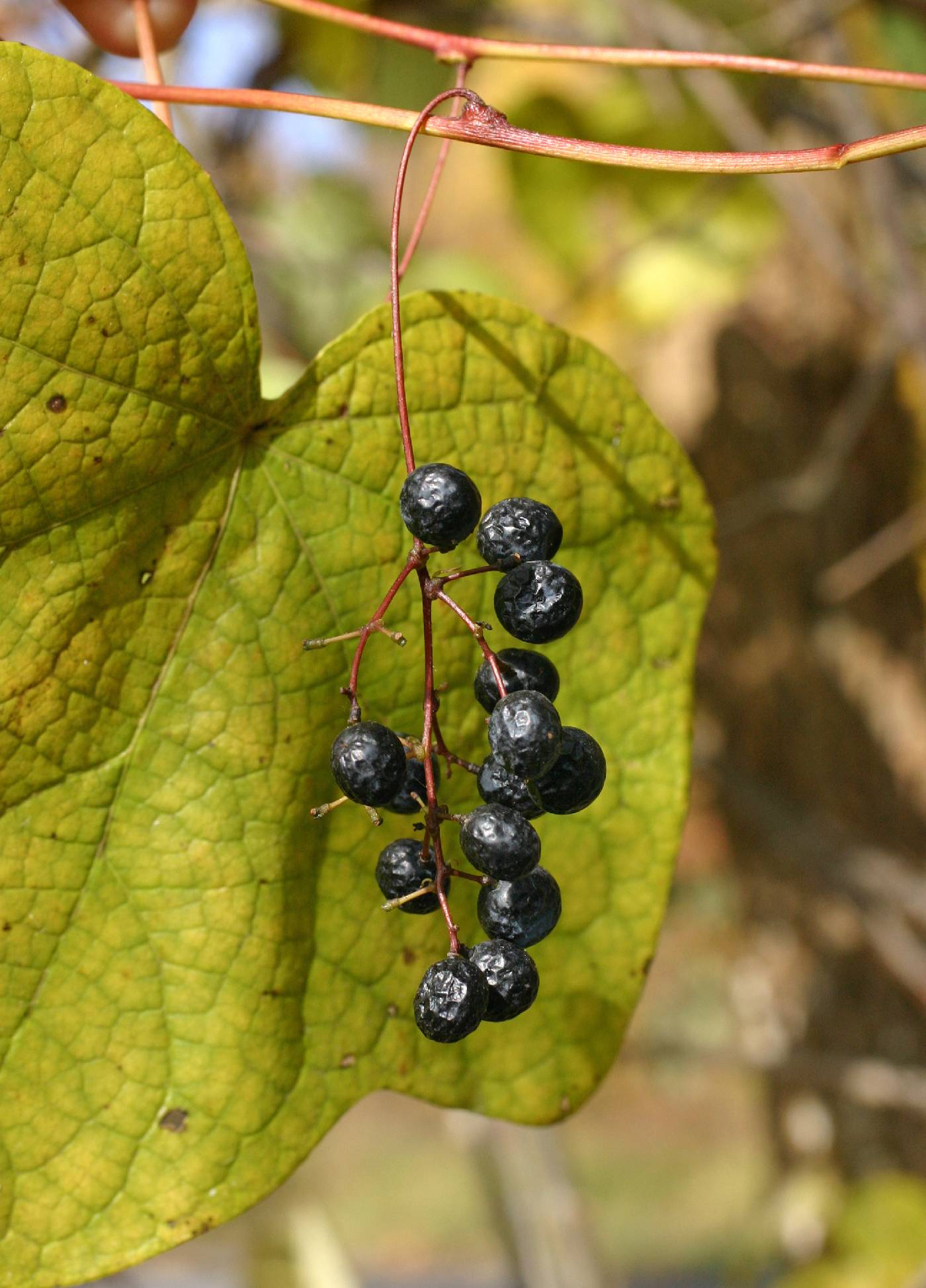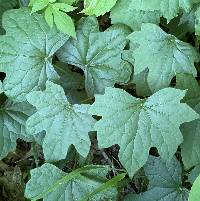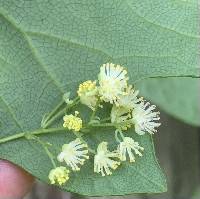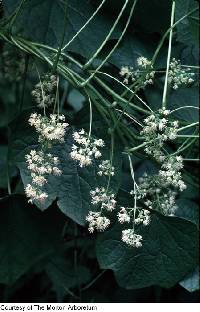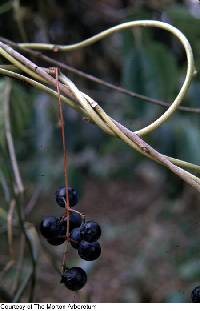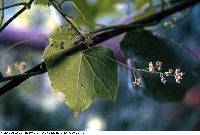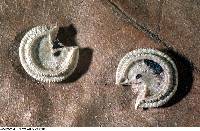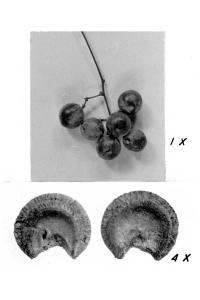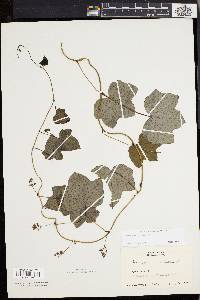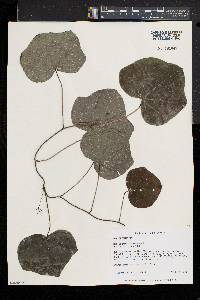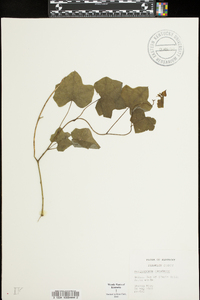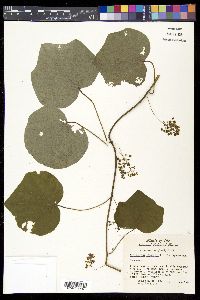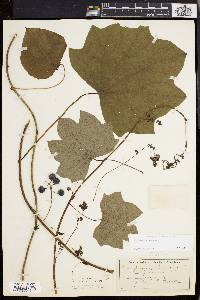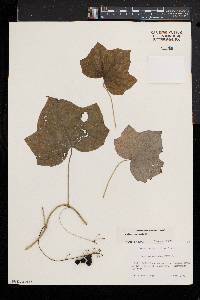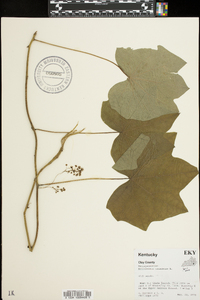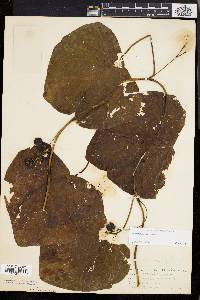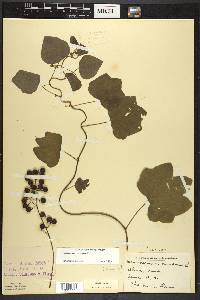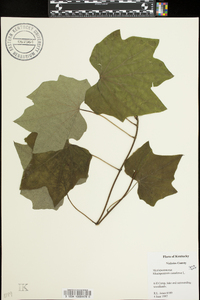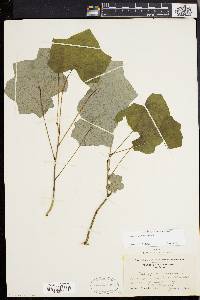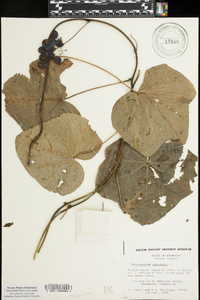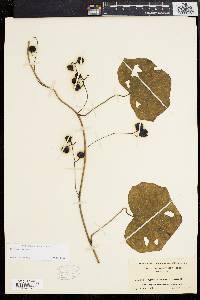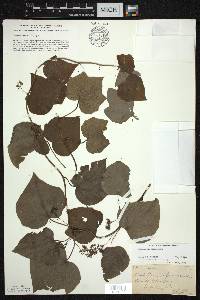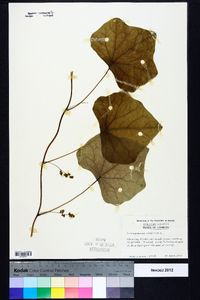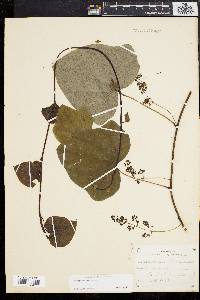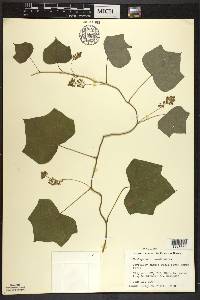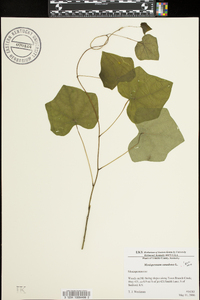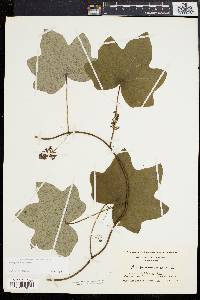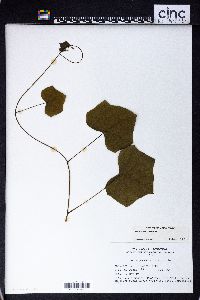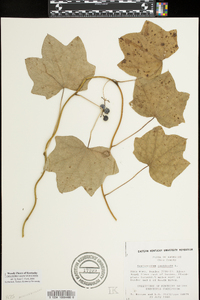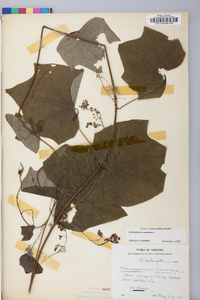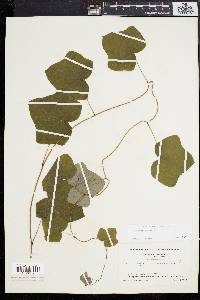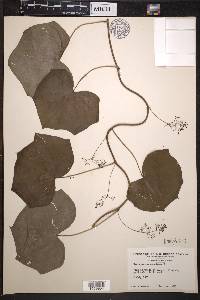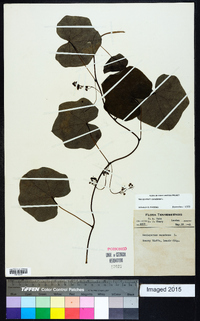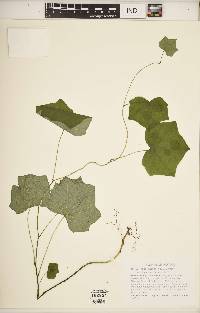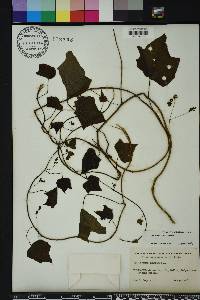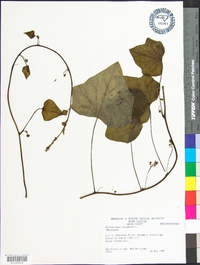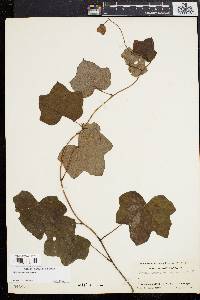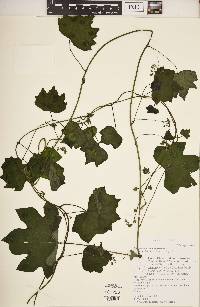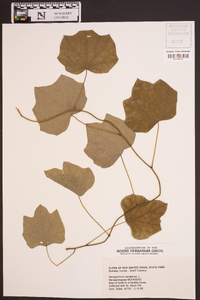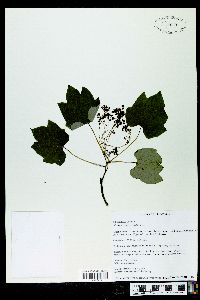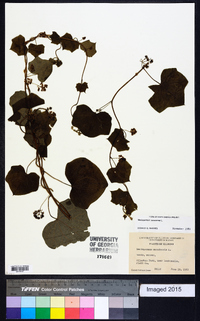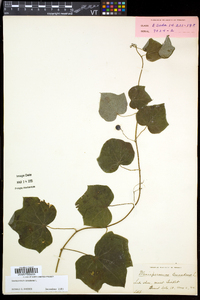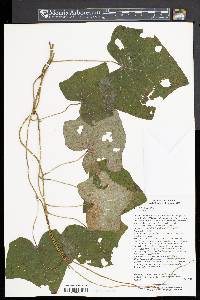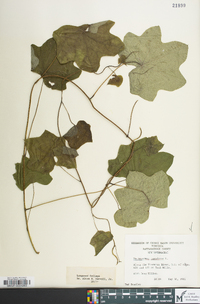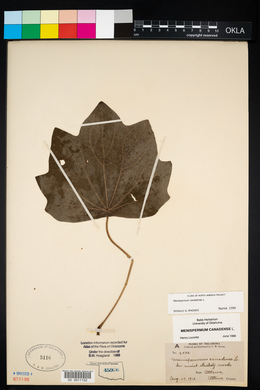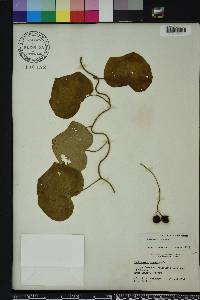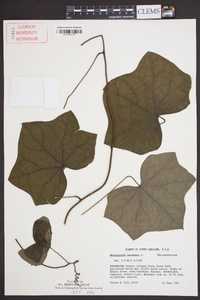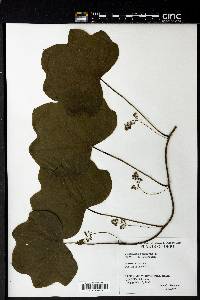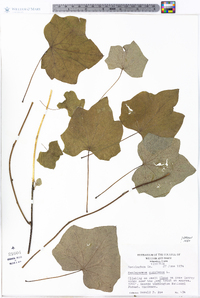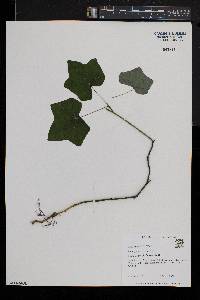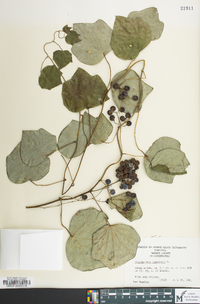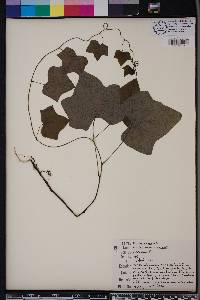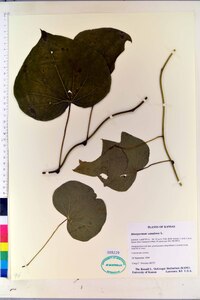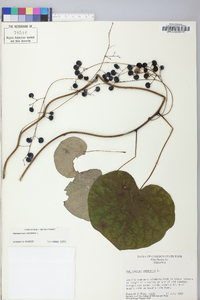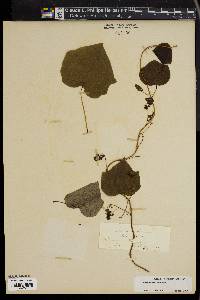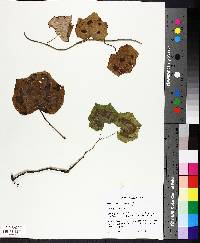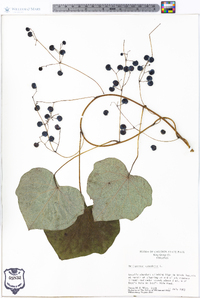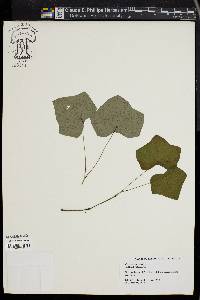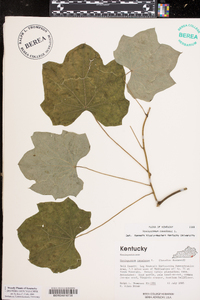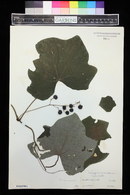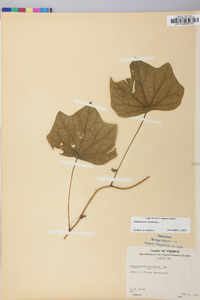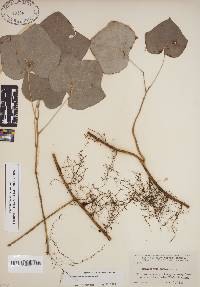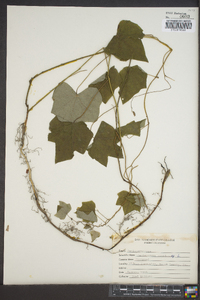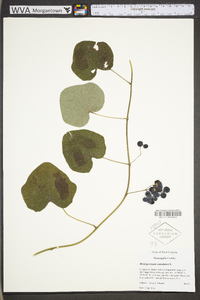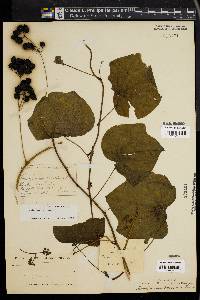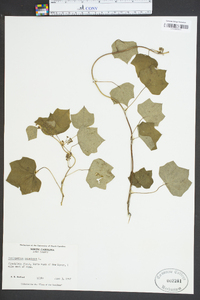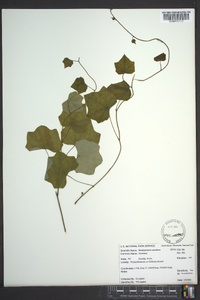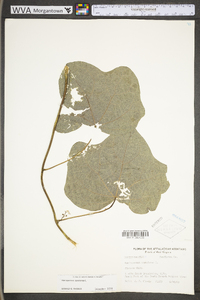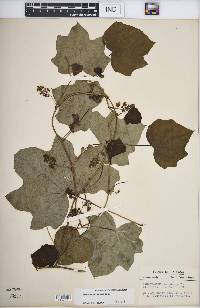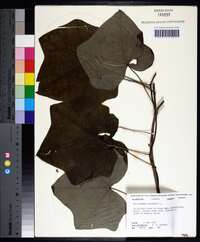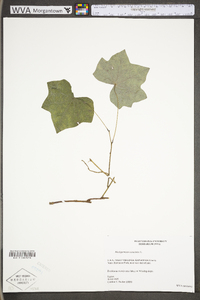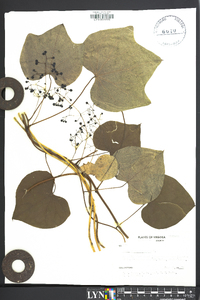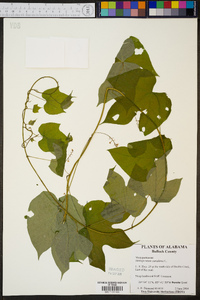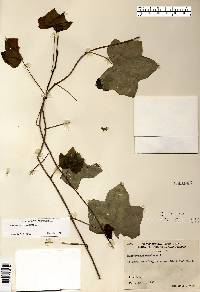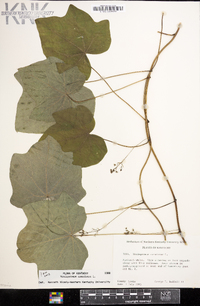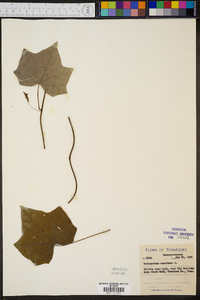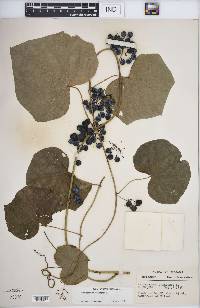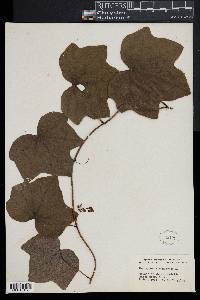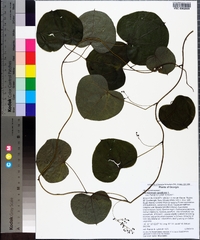
|
|
|
|
Family: Menispermaceae
Canadian Moonseed, more...common moonseed
|
Vines or lianas , vines twining, to ca. 5 m; rhizomes to 1 cm diam. Leaves peltate with petiole inserted to 11 mm from margin, rarely not peltate; petiole to 20 cm. Leaf blade ovate or nearly orbiculate, rarely reniform, to 23 × 24 cm, membranous; venation 7-12. Inflorescences to 18 cm; rachis glabrous or sparsely pilose. Flowers: sepals (4-)5-8, ovate, elliptic, or obovate, 1-4 × 0.4-1.8 mm, glabrous or sparsely pilose; petals 4-12, elliptic to nearly orbiculate or obovate, 0.6-2 × 0.6-2 mm, margins slightly involute, glabrous. Staminate flowers: stamens to 4 mm. Pistillate flowers: staminodes to 0.8(-1.5) mm; pistils 2-4, to 1.4 mm. Drupes black or bluish black, 8-13 mm diam., often glaucous. 2 n = 52. Flowering spring-summer. Deciduous woods and thickets, along streams, bluffs and rocky hillsides, fencerows, shade tolerant; 0-700 m; Man., Ont., Que.; Ala., Ark., Conn., Del., D.C., Fla., Ga., Ill., Ind., Iowa, Kans., Ky., Md., Mass., Mich., Minn., Miss., Mo., Nebr., N.H., N.J., N.Y., N.C., N.Dak., Ohio, Okla., Pa., R.I., S.C., S.Dak., Tenn., Tex., Vt., Va., W.Va., Wis. The fruit of Menispermum canadense is thought to be poisonous. This species is sometimes grown as an ornamental. Some Native American tribes used Menispermum canadense medicinally as dermatological, gastrointestinal, gynecological, and venereal aids, and as remedies for various other complaints (D. E. Moerman 1986).
Perennial woody vine to 5 m long Stem: green, climbing, hairy near tip. Leaves: alternate, the stalk attached up to 11 mm inside the leaf margin (peltate), to 23 cm long, to 24 cm wide, broad egg-shaped to nearly round or rarely kidney-shaped, heart-shaped to squared or rounded at the base and pointed to rounded or rarely notched at the tip, five- to seven-lobed or -angled. Flowers: either male or female, found on separate plants, borne axillary on a branched inflorescence (panicle) to 18 cm long, with five to eight hairless or sparsely hairy sepals and four to twelve elliptic to nearly rounded or inversely egg-shaped petals with margins slightly curved inward. The male flowers have stamens to 4 mm long, while the female flowers have sterile stamens to 0.8 mm long and two to four pistils to 1.4 mm long. Fruit: fleshy with a center stone (drupe), black or bluish black, 8 - 13 mm across, spherical, often covered with a whitish waxy coating (glaucous), with the stone resembling a half moon. Similar species: The peltate leaves and half moon-shaped seeds of this species make it distinctive in the Chicago Region. Flowering: late May to mid July Habitat and ecology: Common in rich woods and shaded floodplains. Occurence in the Chicago region: native Notes: The fruit of this species is highly poisonous and may be fatal if swallowed. Etymology: Menispermum comes from the Greek words men, meaning moon, and sperma, meaning seed. Canadense means "from Canada." Author: The Morton Arboretum Climbing 2-5 m; lvs slender-petioled, broadly ovate to suborbicular, 10-15 cm long and wide, shallowly 3-lobed to entire; fr bluish-black, 6-10 mm, poisonous; 2n=52. Moist woods and thickets; w. Que. and w. N. Engl. to Man., s. to Ga. and Okla. June, July. Gleason, Henry A. & Cronquist, Arthur J. 1991. Manual of vascular plants of northeastern United States and adjacent Canada. lxxv + 910 pp. ©The New York Botanical Garden. All rights reserved. Used by permission. From Flora of Indiana (1940) by Charles C. Deam Infrequent to common throughout the state on the low banks of streams, in alluvial lands along streams, on fences along roadsides, and on the steep and rocky slopes of streams and ravines. Most abundant in overflow woods in the Lower Wabash Valley. This plant twines from left to right. It freezes to the ground each year throughout the state except in a few of the southwestern counties where it becomes woody. I have a specimen from Warrick County that has a stem 1 cm in diameter. The rhizomes were formerly much used in medicine but are rarely used now. When this plant is introduced into cultivated grounds, it is almost impossible to exterminate it. Personal experience prompts this statement. .…… Indiana Coefficient of Conservatism: C = 3 Wetland Indicator Status: FAC |
|
|
|
This project was made possible in part by the Institute of Museum and Library Services [MG-70-19-0057-19].
Powered by Symbiota

